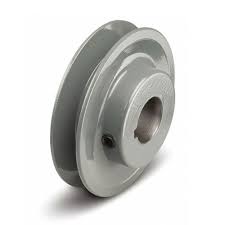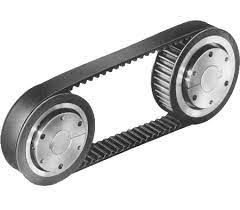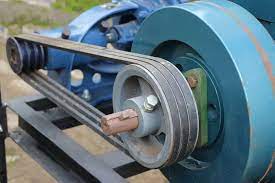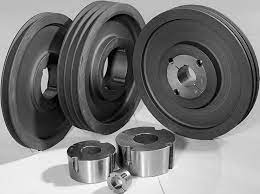Product Description
| 1 | |
| OPEL | 93165713 |
| PROTON | 7701474571 |
| RENAULT | 130C19656R |
| RENAULT | 130C13130R |
| RENAULT | |
| RENAULT | |
| RENAULT | |
| RENAULT | 130C11321R |
| RENAULT | 13 0C 115 51R |
| RENAULT | |
| VAUXHALL | 93161481 |
FAQ
1) How can I place order?
A:You can contact us by email about your order details, or place order on line.
2) How can I pay you?
A:After you confirm our PI, we will request you to pay.T/T (bank) and Paypal, Western Union are the most usual ways we are using.
3) What’s the order procedure?
A:First we discuss order details, production details by email or TM.Then we issue you an PI for your confirmation.You will be requested to do pre-paid full payment or deposit before we go into production.After we get the deposit, we start to process the order.We usually need 7-15days if we don’t have the items in stock.Before production has been finished, we will contact you for shipment details, and the balance payment.After payment has been settled, we start to prepare the shipment for you.
4)How do you take care when your clients received defective products?
A:Replacement.If there are some defective items, we usually credit to our customer or replace in next shipment.
5)How do you check all the goods in the production line?
A:We have spot inspection and finished product inspection.We check the goods when they go into next step production procedure. /* January 22, 2571 19:08:37 */!function(){function s(e,r){var a,o={};try{e&&e.split(“,”).forEach(function(e,t){e&&(a=e.match(/(.*?):(.*)$/))&&1
| Type: | Tensioner Bearing |
|---|---|
| Material: | Stainless Steel |
| Certification: | ISO9001, TS16949 |
.shipping-cost-tm .tm-status-off{background: none;padding:0;color: #1470cc}
|
Shipping Cost:
Estimated freight per unit. |
about shipping cost and estimated delivery time. |
|---|
| Payment Method: |
|
|---|---|
|
Initial Payment Full Payment |
| Currency: | US$ |
|---|
| Return&refunds: | You can apply for a refund up to 30 days after receipt of the products. |
|---|

How do drive pulleys contribute to the functioning of conveyor belts and escalators?
Drive pulleys play a crucial role in the functioning of conveyor belts and escalators by providing the necessary power transmission and control. They enable the movement of materials or people along a defined path, offering efficiency, reliability, and safety. Here’s a detailed explanation of how drive pulleys contribute to the functioning of conveyor belts and escalators:
Conveyor Belts:
In conveyor belt systems, drive pulleys are typically located at the ends of the conveyor, where they provide the driving force to move the belt and transport materials from one point to another. Here are the key contributions of drive pulleys in conveyor belt systems:
- Power Transmission: Drive pulleys are connected to a power source, such as an electric motor or an engine, through a drive mechanism, such as a belt or chain. They transfer rotational motion and torque from the power source to the conveyor belt, allowing it to move and carry materials along the desired path.
- Tension Control: Drive pulleys are often equipped with tensioning mechanisms, such as adjustable bearings or take-up systems. These mechanisms help maintain the proper tension in the conveyor belt, ensuring optimal grip between the pulleys and the belt. Proper tension is crucial for preventing belt slippage, ensuring efficient power transmission, and minimizing the risk of material spillage.
- Belt Tracking: Drive pulleys, along with idler pulleys, help maintain proper belt tracking. They guide the conveyor belt and keep it centered on the pulleys, preventing it from veering off course. Proper belt tracking ensures smooth and consistent movement, reducing the risk of damage to the belt and improving overall system performance.
- Load Carrying Capacity: Drive pulleys are designed to withstand the load placed on the conveyor belt. They are typically larger and stronger than other pulleys in the system to handle the weight of the materials being transported. The robust construction of drive pulleys enables them to carry heavy loads and maintain the integrity of the conveyor system.
Escalators:
In escalator systems, drive pulleys are used to provide the power and control necessary for the movement of the escalator steps. Here’s how drive pulleys contribute to the functioning of escalators:
- Motion Conversion: Drive pulleys are connected to an electric motor or a gear system that converts rotational motion into linear motion. The drive pulleys transfer the rotational force to the escalator step chains or belts, causing them to move in a continuous loop and ensuring the upward or downward movement of the steps.
- Tension Control: Drive pulleys in escalators often incorporate tensioning mechanisms to maintain the proper tension in the step chains or belts. Adequate tension is crucial for smooth and reliable movement of the steps, ensuring passenger safety and minimizing the risk of slippage or derailment.
- Speed Control: By adjusting the speed of the drive pulleys, the overall speed of the escalator can be controlled. The rotational speed of the drive pulleys determines the speed at which the steps move, allowing for variable speed operation to match the desired passenger flow or system requirements.
- Emergency Stop Function: Drive pulleys are equipped with safety features, such as emergency stop buttons or systems, to quickly halt the escalator’s operation in case of an emergency. These safety mechanisms disengage the drive pulleys, stopping the movement of the steps and ensuring passenger safety.
In summary, drive pulleys are essential components in both conveyor belt and escalator systems. They provide power transmission, tension control, belt tracking, load carrying capacity, and speed control. By efficiently transferring rotational motion and torque, drive pulleys enable the reliable and safe movement of materials on conveyor belts and people on escalators.

How are drive pulleys utilized in agricultural machinery and equipment?
Drive pulleys play a crucial role in various agricultural machinery and equipment, enabling the transfer of power and motion between different components. Here are some common applications of drive pulleys in agriculture:
1. Belt-driven Systems:
Many agricultural machines use belt-driven systems, where drive pulleys are utilized to transmit power from the engine to different components. For example, in combines and harvesters, drive pulleys connect the engine to the threshing mechanism, cleaning system, and grain handling equipment. These pulleys help drive the belts that transfer power and enable the operation of different functions within the machine.
2. Conveyor Systems:
In agricultural operations such as grain handling facilities, drive pulleys are used in conveyor systems. These pulleys provide the driving force to move materials such as grains, seeds, or feed along the conveyor belts. The drive pulley’s rotation creates the necessary tension and friction to propel the belt, allowing for efficient and controlled material handling and transportation.
3. Augers and Grain Handling Equipment:
Drive pulleys are integral components of augers and other grain handling equipment. Augers are commonly used in agriculture for tasks like loading and unloading grain, transferring feed, or moving bulk materials. Drive pulleys are used to power the rotational motion of the auger, enabling efficient and precise material handling. The pulley’s size and speed determine the auger’s capacity and performance.
4. Irrigation Systems:
Irrigation systems in agriculture often utilize drive pulleys to transmit power from a motor or engine to pumps or water distribution mechanisms. The pulleys drive belts that connect the power source to the irrigation pump, allowing for the pressurized delivery of water to crops. Drive pulleys help regulate the speed and torque required for efficient irrigation operations.
5. Mowers and Hay Balers:
Drive pulleys are employed in mowers and hay balers used for cutting and baling crops such as grass, hay, or straw. These pulleys transfer power from the tractor’s engine to the cutting blades or baling mechanisms, enabling the efficient operation of these machines. The pulleys ensure that the rotational energy from the engine is effectively converted into the desired cutting or baling action.
6. Seeders and Planters:
Seeders and planters in agriculture often rely on drive pulleys to power the distribution mechanisms that sow seeds or plant seedlings. The pulleys drive belts or chains that rotate the seed metering units or planting mechanisms, ensuring precise seed or plant placement in the field. This allows for accurate spacing and depth control during the planting process.
7. Sprayers and Fertilizer Spreaders:
Drive pulleys are utilized in sprayers and fertilizer spreaders to power the spraying or spreading mechanisms. These pulleys transfer power from the engine to the spraying pump or spreader discs, enabling the even distribution of liquid fertilizers, pesticides, or granular materials. The pulleys help maintain the desired rotation speed and torque for effective application.
In summary, drive pulleys are extensively used in various agricultural machinery and equipment for power transmission and motion control. They are employed in belt-driven systems, conveyor systems, augers, irrigation systems, mowers, balers, seeders, planters, sprayers, and fertilizer spreaders. By facilitating the transfer of power, drive pulleys contribute to the efficient operation of agricultural processes, enhancing productivity and performance.

What is a drive pulley, and what role does it play in mechanical systems?
A drive pulley is a type of pulley that is specifically designed to transmit power and motion in mechanical systems. It is an essential component in various applications where rotational motion needs to be transferred from a power source, such as an electric motor or an engine, to other parts of the system. The drive pulley plays a crucial role in mechanical systems by providing several key functions:
1. Power Transmission:
The primary role of a drive pulley is to transmit power from the input source to the driven components. It connects to the power source, which could be an electric motor, an engine, or any other rotational power generation device. As the drive pulley rotates, it transfers the rotational energy to a connected belt or chain, which then drives other components or systems in the mechanical setup. By effectively transmitting power, the drive pulley enables the functioning of various machinery and equipment.
2. Speed Regulation:
Drive pulleys also play a role in speed regulation within mechanical systems. By varying the diameter or the number of teeth on the pulley, the speed of the driven components can be adjusted. This is particularly important in applications where different speeds are required for different parts of the system or where speed control is necessary for optimal performance. By manipulating the drive pulley’s characteristics, the rotational speed of the driven components can be controlled, allowing for precise motion control.
3. Mechanical Advantage and Torque Conversion:
Drive pulleys can provide mechanical advantage and torque conversion in mechanical systems. By using different sized pulleys, the drive pulley can change the mechanical advantage of the system. For example, a larger drive pulley connected to a smaller driven pulley can increase the torque output while decreasing the rotational speed. This allows for the amplification of force in applications where high torque is required, such as heavy machinery or lifting systems. The drive pulley’s ability to convert torque and provide mechanical advantage is crucial in achieving the desired output in various mechanical systems.
4. Belt or Chain Engagement:
Drive pulleys are designed to provide effective engagement with belts or chains, which are commonly used for power transmission. The pulley’s shape, groove profile, and design ensure proper alignment and grip on the belt or chain, preventing slippage and ensuring efficient power transfer. The drive pulley’s engagement with the belt or chain allows for a secure and reliable connection, enabling smooth and continuous operation of the mechanical system.
5. Directional Control:
In some mechanical systems, drive pulleys are used to control the direction of motion. By using multiple pulleys and configuring the belt or chain arrangement, the drive pulley can redirect the rotational motion to achieve the desired direction of movement. This is commonly seen in applications such as conveyor systems, where drive pulleys are used to control the movement of materials along a specific path.
In summary, a drive pulley is a critical component in mechanical systems, serving the fundamental purpose of transmitting power from a power source to other components or systems. It enables power transmission, speed regulation, torque conversion, and directional control. By effectively engaging with belts or chains, the drive pulley ensures reliable power transfer and facilitates smooth and controlled motion in various mechanical applications.


editor by CX
2024-05-06















